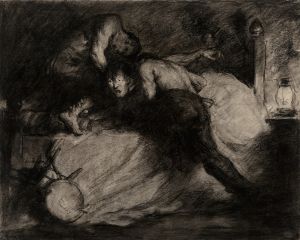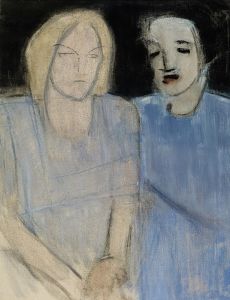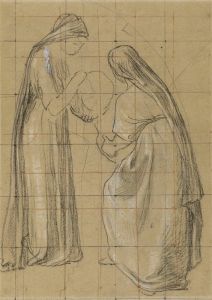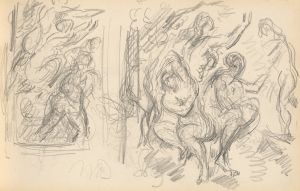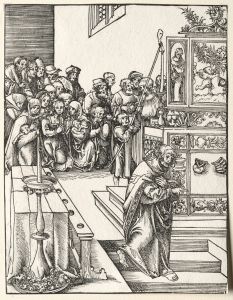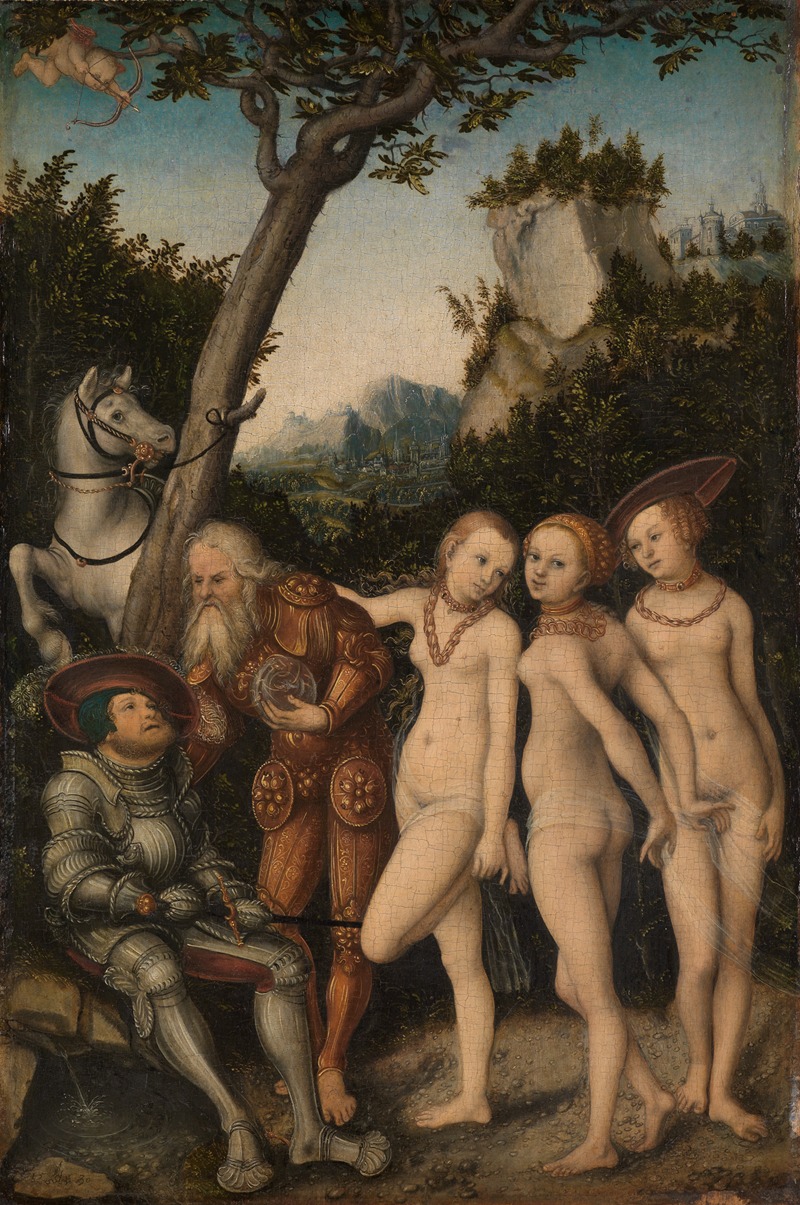
Judgment of the Paris
A hand-painted replica of Lucas Cranach the Elder’s masterpiece Judgment of the Paris, meticulously crafted by professional artists to capture the true essence of the original. Each piece is created with museum-quality canvas and rare mineral pigments, carefully painted by experienced artists with delicate brushstrokes and rich, layered colors to perfectly recreate the texture of the original artwork. Unlike machine-printed reproductions, this hand-painted version brings the painting to life, infused with the artist’s emotions and skill in every stroke. Whether for personal collection or home decoration, it instantly elevates the artistic atmosphere of any space.
Lucas Cranach the Elder, a prominent German Renaissance painter, created several versions of "The Judgment of Paris," a theme derived from classical mythology. This subject, popular among Renaissance artists, depicts the story from Greek mythology where Paris, a Trojan prince, is asked to judge the fairest among the three goddesses: Hera, Athena, and Aphrodite. The narrative originates from the mythological events leading to the Trojan War, as described in various ancient texts, including those by Homer.
Cranach's interpretation of "The Judgment of Paris" reflects his distinctive style, characterized by elongated figures, attention to detail, and a blend of Gothic and Renaissance elements. His works often include a landscape background, which is typical of Northern Renaissance art, providing a naturalistic setting for the mythological scene. The painting captures the moment Paris is presented with the task of choosing the most beautiful goddess, each offering him a bribe: Hera promises power, Athena offers wisdom, and Aphrodite tempts him with the love of the most beautiful mortal woman, Helen of Troy.
Cranach's versions of this theme are notable for their composition and the way they reflect the cultural and artistic values of the time. The goddesses are often depicted in the nude, a common practice in Renaissance art to emphasize beauty and idealized forms, drawing inspiration from classical antiquity. The figures are typically arranged in a harmonious and balanced composition, showcasing Cranach's skill in creating visually appealing and thematically rich artworks.
The artist's use of color and detail in these paintings is significant. Cranach employs a rich palette, with vibrant colors that highlight the figures and the surrounding landscape. The textures of the fabrics, the sheen of the goddesses' skin, and the intricate details of the natural environment are rendered with precision, demonstrating Cranach's mastery of the medium.
Cranach's "The Judgment of Paris" also reflects the humanist interests of the Renaissance, where classical themes were revisited and reinterpreted. The painting serves as a moral allegory, exploring themes of choice, beauty, and consequence, inviting viewers to contemplate the implications of Paris's decision and its impact on the mythological narrative.
Several versions of "The Judgment of Paris" by Cranach exist, each with slight variations in composition and detail, indicating the artist's ongoing engagement with the theme and its popularity among patrons of the time. These works are housed in various museums and collections, contributing to Cranach's reputation as a leading figure in Northern Renaissance art.
Overall, Lucas Cranach the Elder's "The Judgment of Paris" exemplifies the fusion of mythological storytelling with the artistic innovations of the Renaissance, capturing the enduring appeal of classical themes through the lens of 16th-century German art.






